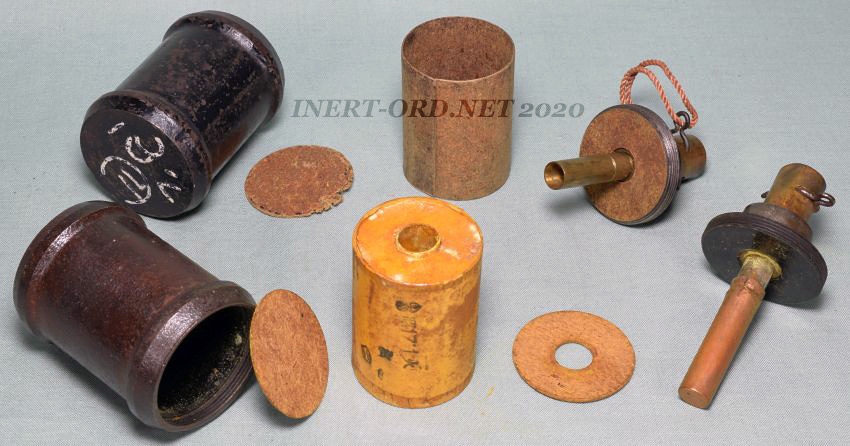
Not unusual as every country involved was faced with conservation of limited resources, be that time or materials.
Bottom Grenade, dated Jan 1942, has a refined internal paper capsule for the explosive .This would be an early production Type 99.
A high degree of detailed workmanship involved to create, fill and seal that assembly.
Top Grenade, a year later, dated Feb.1943, has a simplified fiberboard liner to separate the picric acid explosive from the iron casing.
An obvious improvement in assembly effort, but a possible safety risk?
Picric Acid, a typical explosive filler, is known to chemically interact with iron, producing unstable shock-sensitive explosive salts over time.
(Making an assumption here: The grenade parts are the original configuration. - Not mixed and matched.)

